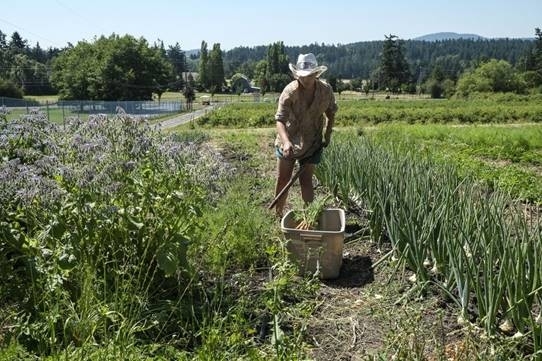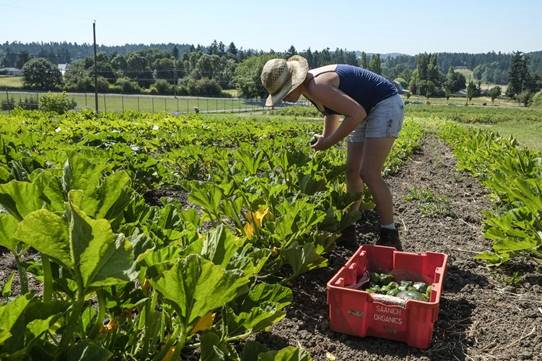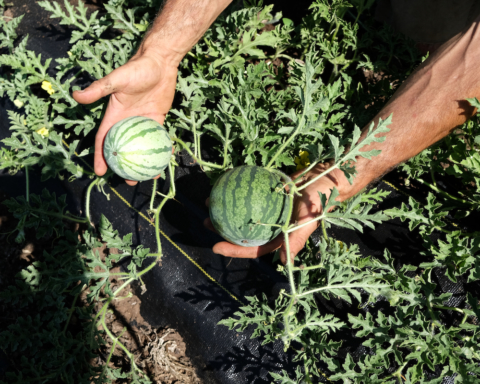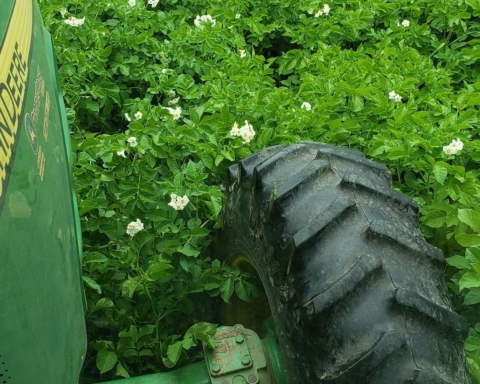By the Province of British Columbia
In keeping with the respect BC’s agricultural operators have for the land, air, and water, new rules for agricultural environmental management are now in place. After years of science and evidence-based analysis, as well as conversations with agricultural operators throughout the province, a new regulation called the Code of Practice for Agricultural Environmental Management (AEM Code) came into effect on February 28, 2019. The goal of this Code is to provide more clarity for the agriculture sector while better protecting the environment for all British Columbians.
Organic farmers will see that some requirements are continued from the previous regulation, such as no direct discharges into watercourses, some have been revised to clarify expectations, and some are new, several of which are being phased in over the next decade.
Why a new regulation?
Through several consultations we heard that the old rules were too vague for operators and weren’t adequately protecting the environment. Working with farmers, we built a fair set of rules that ensure agricultural practices protect our drinking water, watercourses, and air.
The new AEM Code takes a different approach to the previous regulation. Requirements are more clearly outlined, and they’re both risk-based and science-based. For example, more protective measures now need to be taken in high-risk areas and during high-risk conditions. Also, soil samples are required to be taken to help determine what measures are necessary on specific farms.
Who does this regulation apply to?
It applies to all agricultural operations in BC, from small hobby farms to large commercial operations, including organic farms. That said, the regulation has been built with the understanding that not all agricultural operations are the same and that there are differences from one region of this province to another. Various requirements are contingent on an operation’s location, size, and type of activity. Many farms won’t need to make big changes to adjust to the new regulation.
What does this regulation include?
The new regulation includes provisions that aim to: ensure watercourses and groundwater are protected through proper storage and use of manure, other nutrient sources, and other materials, such as wood residue; prevent water quality impacts from contaminated run-off; prohibit direct discharges into watercourses; require nutrient management planning; allow for increased monitoring in high-risk areas; provide clear compliance expectations for agricultural operators for setbacks, storage, and nutrient applications; and, require record-keeping.
When is this happening?
The new rules came into effect on February 28, 2019, but some of the requirements, such as nutrient management plans, will be phased-in over the next decade. This approach will give agricultural operators time to plan for and adjust to the new rules, and for government to work collaboratively with industry to develop the necessary tools to support implementation.
What does this mean for me?
Organic farmers will need to demonstrate a basic level of environmental protection, but many are already doing what the regulation requires. This includes:
- ensuring minimum setbacks for various activities and proper storage requirements are followed;
- preventing contaminated runoff, leachate, solids, and air contaminants from entering watercourses, crossing property boundaries, or going below the seasonal high water table;
- registration for boilers and heaters with greater than 0.15 MW capacity, and meeting emissions limits for opacity and particulate matter;
- nitrogen application rates that meet the crop’s needs and not more, for applications to land and other than to land (e.g., grown in containers);
- collecting and containing wastewater, contaminated runoff, or leachate;
- wastewater needs to be treated prior to discharge into the environment; and
- record-keeping to demonstrate compliance.
Requirements will affect farms differently depending on whether they are in a high-risk area, what their current practices are, and the nature and size of the farm. In addition to the basic level of protection above, these include increased monitoring and protective measures in high-risk areas and during high-risk conditions, such as:
- protective bases for greenhouses and storage structures in vulnerable aquifer recharge areas to ensure no leaching down into the aquifer;
- covering temporary field-stored piles, including agricultural by-products or wood residue, and outdoor agricultural composting piles, in high precipitation areas from October 1 to April 1.
How will the regulation be enforced?
As we roll out the new regulation, we will be working with you on how to best help you comply with the new rules. Our goal is to support agricultural operators so that, working together, we can better protect the environment.
There are dedicated staff within the Ministry of Environment and Climate Change Strategy who will work with you to understand your obligations under the Environmental Management Act, which this regulation falls under. The team uses a consistent and risk-based approach for establishing compliance and enforcement priorities.
Learn more: to find out if you are in a high-risk area, or need more information on what records you need to keep, or what minimum setbacks you need to follow, please visit the following website at: gov.bc.ca/Agricultural-Environmental-Management.
Questions? Contact: AEMCoPenquiries@gov.bc.ca
All photos: Province of British Columbia











